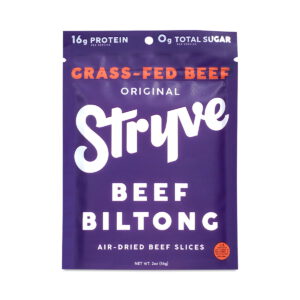- Budget-friendly meal planning strategies
- Healthy snacks on a budget
- Inexpensive yet nutritious ingredients
- Time-saving cooking techniques
- Smart shopping tips for families
- Meal prep ideas for busy weekdays
Grocery shopping can sometimes feel like a daunting task, especially for busy families juggling countless responsibilities. However, with a few savvy strategies, you can transform your shopping trips into productive and fun outings that support your budget-friendly and healthy eating goals. Here are some practical tips to help you navigate both online and offline grocery shopping effectively.
- Plan Your Meals: Before heading out, take a little time to plan your meals for the week. Create a menu that incorporates seasonal produce, which is often more affordable and flavorful. You can use apps or simple lists to outline your grocery needs based on your meal plan.
- Make a Shopping List: Stick to a list to avoid impulse buys. Include healthy staples such as whole grains, lean proteins, and an array of colorful fruits and vegetables. This list will help you stay focused and make your shopping trip more efficient.
- Buy in Bulk: Purchasing grains, beans, nuts, and seeds in bulk can save you money over time. Look for bulk bins at local grocery stores or co-ops. Consider online retailers for bulk purchases if you can’t find what you need locally.
- Explore Local Farmers’ Markets: Not only can you find fresh, organic produce at farmers’ markets, but these venues often offer more affordable options compared to supermarkets. Many local growers sell directly to consumers, which can keep prices lower while supporting your community.
- Shop the Perimeter: When shopping in-store, stick to the perimeter of the grocery store where fresh produce, dairy, and meats are usually located. Processed items, which often carry hidden costs in terms of both health and finances, are generally found in the middle aisles.
- Embrace Frozen and Canned Options: Frozen fruits and vegetables can be just as nutritious as fresh and are often less expensive, plus they have a longer shelf life. Canned options are also great for convenience—just watch for added sugars and sodium. Look for reduced-sodium canned beans for affordable protein sources.
- Utilize Coupons and Sales: Sign up for store loyalty programs to access exclusive discounts and coupons. Use apps like Ibotta or Fetch Rewards to earn cash back on your grocery purchases, making your budget go further.
- Online Shopping Safety: If you choose to shop online, ensure you’re using reputable grocery websites. Read reviews and check their safety protocols, especially when it comes to fresh items. Pay attention to delivery dates to ensure you receive produce at its peak freshness.
- Check Expiration Dates: Always read the expiration and use-by dates on items, particularly for perishables. This helps you avoid wasting food and money on items that may spoil quickly.
By implementing these smart shopping tips, you can make grocery shopping a delightful experience that enhances your family’s commitment to healthy eating. Whether you’re buying organic ingredients or seeking budget-friendly options, there’s always a way to enjoy nutritious food without stretching your wallet too thin.
Healthy snacks on a budget
Healthy snacking is an essential aspect of maintaining a balanced diet, especially for busy families seeking budget-friendly options. Choosing the right snacks can help curb hunger, prevent overeating at meal times, and provide important nutrients necessary for everyone’s health. However, it’s crucial to find snacks that are not only healthy but also easy on the wallet. Here are some strategies for incorporating nutritious and affordable snacks into your family’s routine.
One of the best ways to ensure healthy snacking is to buy whole ingredients and prepare snacks at home. This not only saves money but also allows you to have control over the ingredients. For example, consider making your own snack mixes with a variety of nuts, seeds, and dried fruits. Here’s a simple compared table showcasing homemade versus store-bought snacks:
| Snack Type | Homemade (Cost per serving) | Store-Bought (Cost per serving) | Nutrition Quality |
|---|---|---|---|
| Trail Mix | ~$0.50 | ~$1.50 | High in protein, fiber, and healthy fats |
| Granola Bars | ~$0.75 | ~$1.00 | Can be customized to reduce sugars and add nutrients |
| Veggie Sticks with Hummus | ~$0.80 | ~$2.00 | Fresh, lower sodium, full of vitamins |
It’s important to include portable snacks for busy days when you are on the go. Fruits like apples, bananas, and oranges are nutrient-rich, easy to pack, and require no preparation. Some options include slicing cucumbers or carrots in advance to pair with homemade hummus or yogurt-based dips. When it comes to choosing these ingredients, keep an eye on seasonal produce, as it is typically more affordable and fresher.
Another excellent budget-friendly snack choice is popcorn. Popcorn is a whole grain and a fantastic source of fiber. Air-popping popcorn and sprinkling it with a little salt or nutritional yeast for added flavor can create a delicious, health-conscious snack.
Additionally, try to involve your children in the snacking process. This not only teaches them about making healthy choices but also allows them to experiment with different flavors and combinations. Consider setting up a “snack station” in your kitchen with colorful fruits, cut vegetables, and nut butter to encourage them to grab nutrient-packed snacks instead of processed options.
Reusing containers to store pre-portioned snacks can also play a significant role in making healthy snacking convenient. By preparing these snacks in advance, you can save precious time during busy weekdays and ensure that you have easy access to healthy options.
In summary, incorporating budget-friendly, healthy snacks into your family’s lifestyle involves some creativity and preparation. By choosing whole ingredients, prepping snacks in advance, and getting children involved in the process, families can enjoy nutritious options without overspending. This approach not only fosters better eating habits but also strengthens the family bond through shared activities.
Inexpensive yet nutritious ingredients

When it comes to sourcing inexpensive yet nutritious ingredients for your family meals, turning to basics can make a significant impact on both your wallet and your health. Start by incorporating versatile pantry staples that can stretch into multiple dishes. Options such as whole grains like brown rice, quinoa, and oats not only provide essential nutrients but are also incredibly economical. For instance, a bag of rolled oats can be used for breakfast, in baking, or as a binding agent in savory dishes.
Don’t overlook legumes such as beans, lentils, and chickpeas, which are powerhouses of protein and fiber. They are not only budget-friendly but also incredibly filling, making them a smart choice for families striving for healthy eating. Canned legumes can also be a quick and nutritious addition to meals; just remember to rinse them to cut down on sodium levels.
Fruits and vegetables should be prioritized when shopping for healthy ingredients. Focus on seasonal produce, which is often more affordable and tastes better. Items like broccoli, carrots, and apples can commonly be found at a reduced price in the fall and winter, whereas berries and leafy greens shine in spring and summer. Incorporate frozen fruits and vegetables into your shopping list, as they are typically frozen at their peak ripeness and retain their nutrients, making them a great backup plan when fresh produce is too pricey.
Additionally, don’t underestimate the power of frozen plant-based proteins. Veggie burgers and tofu can be bought in bulk and stored easily. These ingredients can serve as perfect meat alternatives for a variety of dishes, like stir-fries, salads, or wraps, fitting perfectly into a budget-friendly approach to healthy eating.
When considering fresh meats or dairy, opt for less expensive cuts of meat like chicken thighs or ground turkey, which are still nutritious. Buying family packs can save money, and dividing portions into smaller freezer bags ensures you have quick meal options available. In terms of dairy, consider purchasing larger containers of yogurt, which can be more cost-effective than individual servings and serve a variety of purposes, from snacks to smoothies.
Be mindful of ingredient safety both in-store and online. When purchasing from local markets, strive to select organic options whenever possible, especially for items like strawberries and spinach, which tend to absorb pesticides more readily. For online shopping, verify that the delivery service has good reviews, especially regarding their handling of perishable items, to ensure you are receiving fresh produce. Always check expiration dates when your groceries are delivered to avoid any unpleasant surprises.
Shopping tips can further maximize your savings: keep an eye out for local co-ops that allow members to buy bulk foods at discounted prices, and sign up for newsletters from your favorite stores to catch special offers on key ingredients. Utilize apps to keep track of weekly sales, so you’re prepared to make purchases when prices drop.
Incorporating a thoughtful approach to selecting inexpensive yet nutritious ingredients can enhance your family meals and overall wellness. By focusing on staples that provide nutritional value and versatility, you can create satisfying dishes without straining your budget. This way, healthy eating becomes an accessible goal for busy families while prioritizing wellness and financial health.
Time-saving cooking techniques
To streamline cooking during busy weekdays, adopting a few time-saving techniques can make all the difference. One effective method is to leverage the power of one-pot meals. These dishes require minimal cleanup, making them ideal for families with tight schedules. Meals like stir-fries, casseroles, or soups allow you to combine proteins, grains, and vegetables all in one pot, saving both time and effort while ensuring balanced nutrition.
Another strategy is batch cooking. Set aside a few hours on the weekend to prepare large portions of base ingredients such as grains, beans, and roasted vegetables. Storing these in the refrigerator or freezer can facilitate quick assembly of meals during the week. For instance, you can cook a big batch of quinoa to use in salads, bowls, or as a side dish. By having these staples prepared, all that’s left to do is mix and match throughout the week, reducing the daily cooking time significantly.
Utilizing kitchen appliances like slow cookers or pressure cookers can also be a game-changer. With a slow cooker, you can set ingredients in the morning and return home to a ready-to-eat meal. Similarly, a pressure cooker can drastically reduce cooking times for many foods, transforming dried beans into a tender dish in under an hour. These appliances not only save time but also allow for delicious, hearty meals that can serve the whole family.
Prepped ingredients can also enhance efficiency. Take advantage of short cuts like pre-washed salad greens, shredded vegetables, or even pre-marinated proteins that can be quickly sautéed or grilled. Keeping a selection of frozen vegetables on hand can provide an instant solution when fresh ones are not available or when time is short. This way, you can still whip up a nutritious stir-fry or side to accompany your main dish without extra chopping or prep time.
Involving the whole family in the cooking process can make it more efficient and enjoyable. Assigning age-appropriate tasks helps children learn valuable skills while lightening your load. This collaborative effort can not only make cooking feel less burdensome but also help instill a love for healthy eating among the younger members of the family.
Moreover, organizing your pantry and refrigerator can save you time when you need to throw a meal together quickly. Grouping similar items together and keeping your kitchen clutter-free ensures that you can easily find what you need, reducing the time spent searching and prepping.
“The secret of success is to be ready when your opportunity comes.” – Benjamin Disraeli
By employing these time-saving cooking techniques, busy families can maintain a healthy eating routine without feeling overwhelmed. With careful planning and organization, the kitchen can become a space of creativity and balance, making mealtimes a breeze even in the busiest households.
Smart shopping tips for families

- Prioritize Store Brands: Many grocery stores offer their own brand of products that can often be found at a lower price point but maintain similar quality to name brands. Explore these options for staples like canned goods, grains, and dairy products that can fit perfectly into your budget-friendly healthy eating strategy.
- Alternate Shopping Between Stores: Taking the time to shop at multiple stores can yield significant savings. Some stores may have better prices on produce, while others offer discounts on dairy or meats. Create a route that maximizes savings while minimizing extra travel time.
- Leverage Seasonal Sales: Many grocery stores run seasonal promotions, especially during holidays or special occasions. Keep track of these events and align your shopping list with sales for items that fit your healthy eating goals but might normally be out of your price range.
- Consider Store Loyalty Programs: Enrolling in loyalty programs at your grocery store can provide access to personalized discounts and cash-back offers. Make sure to check your digital coupons and store app for additional savings that can enhance your overall grocery shopping experience.
- Avoid Shopping When Hungry: To prevent impulse buys, always shop on a full stomach. Coming to the store well-fed can help you stick to your list and make mindful choices that benefit your budget and your family’s health.
- Use a Price Comparison App: Tech-savvy shoppers can benefit from using price comparison apps that help identify where items are cheapest. This allows you to plan your shopping more effectively and take advantage of the best deals available.
- Educate Your Family: Involve your family in the grocery shopping process by encouraging them to learn about cost-effective healthy eating options. Discuss the purpose of your shopping list and involve them in making choices that support both your budget and nutritional needs.
- What are some easy meal prep ideas for busy families?
- Consider preparing bulk grains, pre-chopping vegetables, and cooking proteins in advance. Simple meal combinations like grain bowls or wraps can be assembled effortlessly during the week.
- How can I stick to a budget while shopping for healthy foods?
- Plan meals around sales, use a shopping list, and buy in bulk. Shopping seasonal produce and store brands can also help keep costs down while benefiting your health.
- Are frozen fruits and vegetables as healthy as fresh?
- Yes, frozen fruits and vegetables can be just as nutritious as fresh because they are often frozen at peak ripeness. They can also be more economical and last longer.
- What should I include in a healthy grocery list?
- Focus on whole grains, lean proteins, fresh fruits and vegetables, and healthy fats. Include a few convenience items like canned beans or frozen veggies for timesaving options.
- How important is it to shop the perimeter of the store?
- Shopping the perimeter typically leads you to whole, unprocessed foods like fruits, vegetables, meats, and dairy, which are usually healthier than the processed items found in the middle aisles.
- How can I make healthy snacks on a budget?
- Prepare snacks at home using bulk ingredients like popcorn, nuts, and dried fruits, or pre-chop fresh veggies to pair with homemade dips. This will save you money and provide nutritious options.
- What can I do to reduce food waste while grocery shopping?
- Plan your meals and make a shopping list based on what you already have at home. Additionally, utilize leftovers in creative ways to ensure that food is consumed before it spoils.
Meal prep ideas for busy weekdays
Meal prepping can revolutionize the way busy families approach their weeknight dinners. By dedicating a little time to prepare meals in advance, you not only save precious evening hours but also ensure that you have healthy options ready to go. Here are some practical meal prep ideas that are both simple and effective for managing your family’s dietary needs without breaking the bank.
Start by choosing a dedicated day for meal prep—Sundays work well for many families. During this time, cook large batches of grains like brown rice or quinoa and store them in the fridge. These can serve as the base for various meals throughout the week. Use mason jars or airtight containers to keep everything organized. For example, prepare enough quinoa for salads, bowls, or as a side dish, allowing you to switch things up easily during the week.
Next, focus on proteins. Cooking a big batch of chicken, turkey, or tofu can enable you to use these in multiple meals. Try seasoning it simply with olive oil, garlic, and herbs to keep it versatile. You can shred the chicken and use it in tacos, salads, or stir-fries. Tofu can be cubed and marinated for use in stir-fries or baked for sandwiches. When buying proteins, look for sales and consider choosing less expensive cuts, which can be just as nutritious.
Don’t forget about vegetables. Chop up a variety of seasonal produce and store them in containers for quick use. Items like bell peppers, zucchini, and carrots can be prepped and stored for snacking or cooking. You could also roast a huge batch of mixed vegetables at the start of the week, using them in omelets, wraps, or grain bowls. Roasting enhances flavors, making them more enticing for both kids and adults alike.
An excellent way to keep meals interesting is by incorporating different sauces and spices. Prepare a few versatile dressings or sauces that can be used to flavor various dishes throughout the week. For instance, a simple vinaigrette can dress salads and grains, while a tahini sauce could enliven roasted vegetables or grain bowls. Use herbs and spices to change up the flavor profiles—all while keeping the same base ingredients.
If your family is on a vegan or vegetarian diet, consider preparing hearty salads with beans or lentils. These ingredients are highly nutritious, budget-friendly, and easy to make in large quantities. Muffins or energy balls made from oats, bananas, and nut butter also provide great snack options that are easy to prep and can be enjoyed throughout the week.
When meal prepping, it’s essential to be mindful of food safety practices. Always cool cooked foods quickly and store them in the fridge to minimize bacterial growth. Label your containers with the preparation date to keep track of freshness and encourage using items before they spoil.
For families who enjoy online shopping, consider ordering bulk staples and pantry items. Websites like Thrive Market and Walmart offer options for bulk buying. Make sure to look for whole grains, beans, nuts, and cleaning supplies online as they can be cheaper than your local grocery store. However, always remember to check reviews and verify the freshness of products before purchasing, particularly perishables.
Incorporating these meal prep strategies not only makes healthy eating easier during hectic weekdays but also helps save time, reduce stress, and maintain a budget-friendly approach for your family’s nutritional needs. When the meals are ready to go, the challenge of cooking every night diminishes, allowing you more family time after a busy day.
New Customers Offer!
Free Gift for the new customer
$24 Value, When You Subscrib Visit Thrive Market












